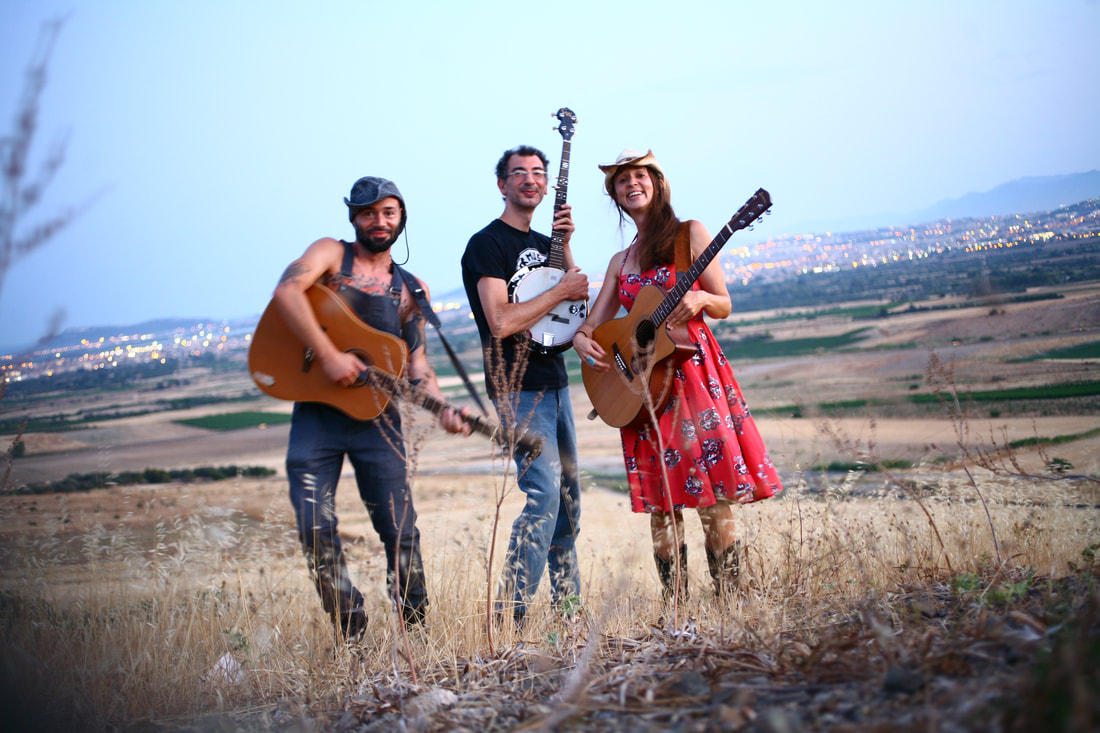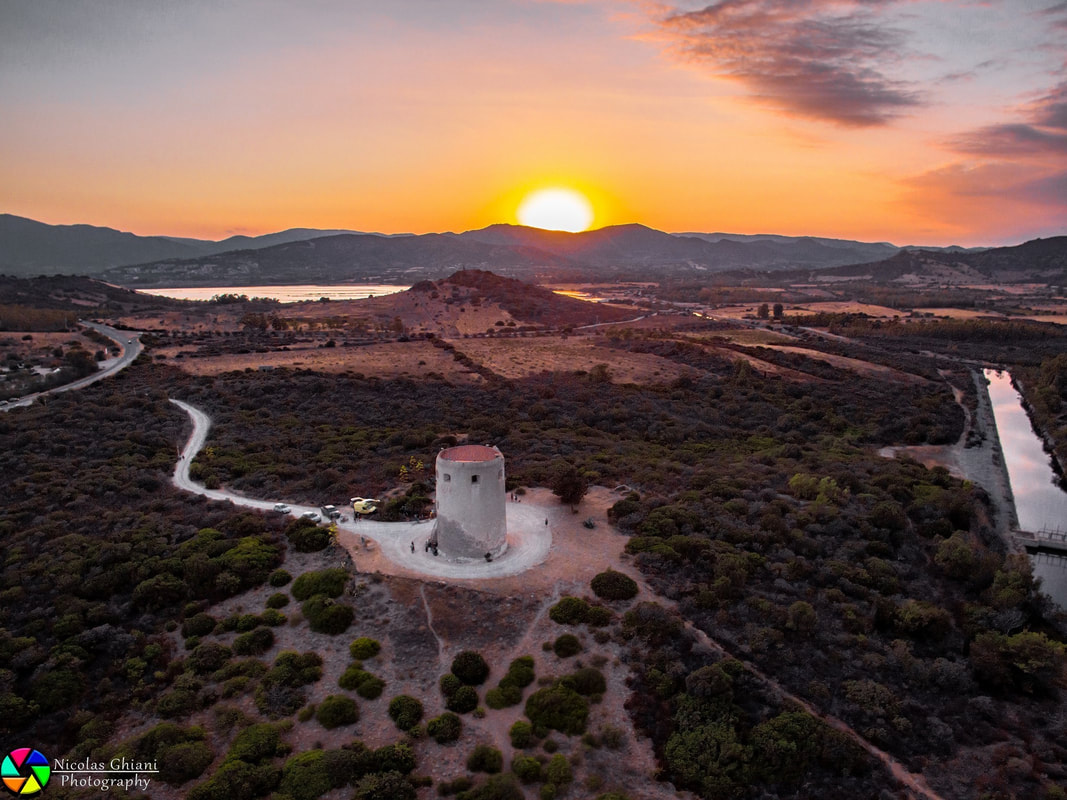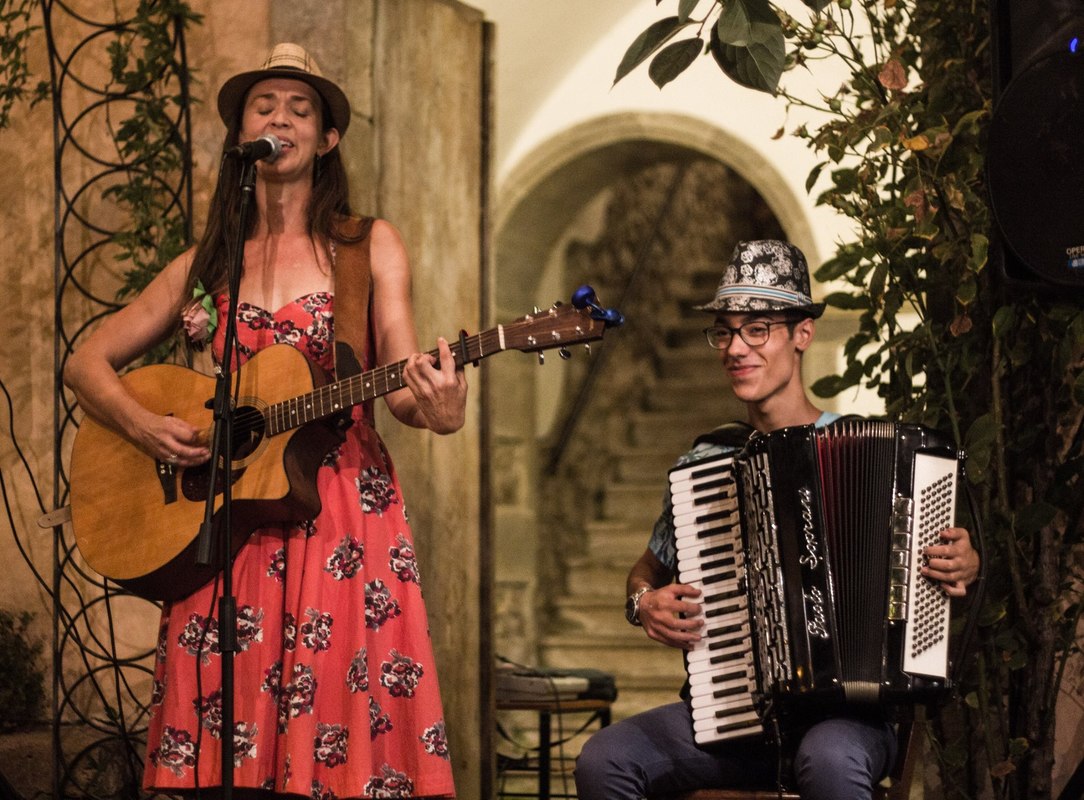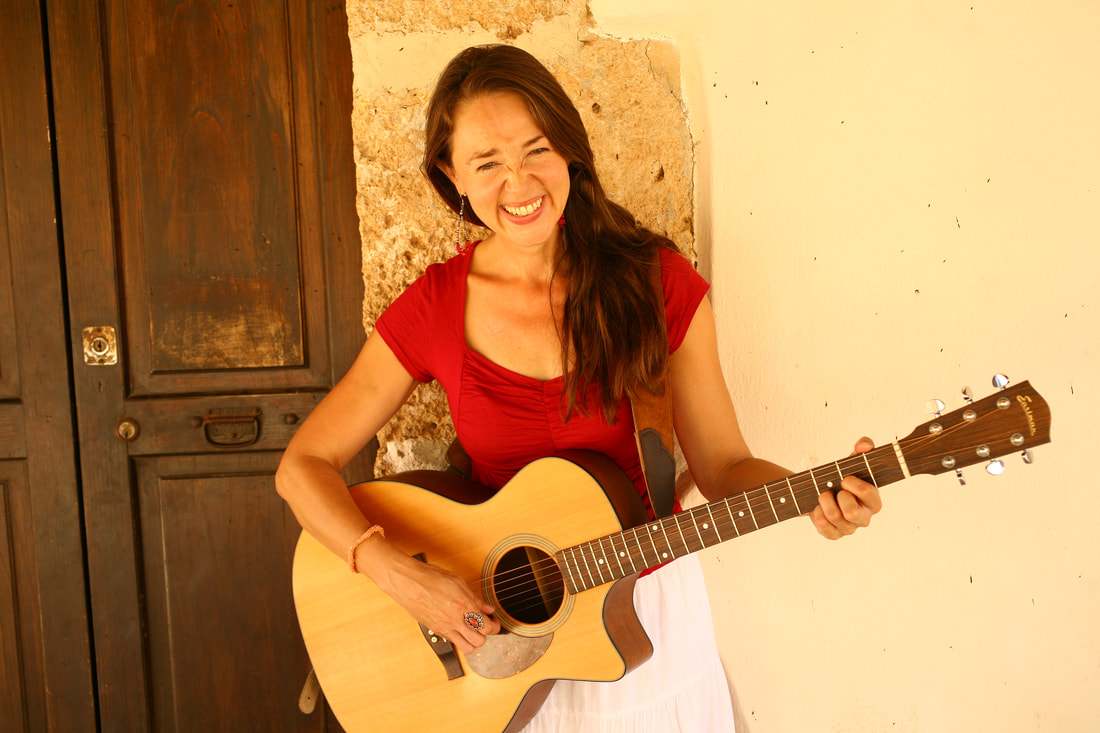6/29/17. Driving with musician friends—one from Sardegna, the other from Sicily—back from the beach in the village of Buggerru, we listen intently to “George Gudger’s Overalls,” recorded by Doc Watson. This bluegrass song talks of sharecropping, hard labor and the struggles of a simple life in rural Alabama. They ask me to translate some of the finer details of the song such as “red Hale County clay”—it’s sung in a very regional and idiomatic Appalachian English—and they are surprised to learn about the history of sharecropping in the southern United States. Deeply moved, my Sardinian friend—a singer and guitar player whose maternal family hails from the very small agricultural village of Tiria—tells me that “Sardi” (Sardinians), too, have a history of sharecropping, labor exploitation and rigid demarcations of social class associated with the work that one does. “Somehow,” he tells me in Italian, “I knew the song talked about this. I felt it, and that’s how I knew I connected with it.”
Monday, 7/17/17, Porto Corrales (Villa Putzu), Sardegna. I’m playing a solo show at the base of a tall, 15th century Aragonese tower on the southeastern coast of Sardegna. The sun is setting behind the mountains to my right, and the back drop is the Mediterranean sea, as far as the eye can see. In front of me, a group of fifty community members, each of whom has brought their own chair for an evening of live music. I play my song “Dogs and Children,” a song about our treatment of animals and children as a litmus test for the psychological health of a community, to this group of Sardinians, most of whom are blues aficionados and have little to no knowledge of English, and a nine year old girl in the first row in front of me starts to weep. Her mother, a local poet who has opened the show with her poems, takes her daughter in her arms to comfort her. Afterward, she comes up to me and tells me that she had recently learned two words in her English class at school: “dogs” and “children.” The rest of the song, she said, she didn’t really understand, but she felt it, deeply, and it made her cry.
Monday, 7/17/17, Porto Corrales (Villa Putzu), Sardegna. I’m playing a solo show at the base of a tall, 15th century Aragonese tower on the southeastern coast of Sardegna. The sun is setting behind the mountains to my right, and the back drop is the Mediterranean sea, as far as the eye can see. In front of me, a group of fifty community members, each of whom has brought their own chair for an evening of live music. I play my song “Dogs and Children,” a song about our treatment of animals and children as a litmus test for the psychological health of a community, to this group of Sardinians, most of whom are blues aficionados and have little to no knowledge of English, and a nine year old girl in the first row in front of me starts to weep. Her mother, a local poet who has opened the show with her poems, takes her daughter in her arms to comfort her. Afterward, she comes up to me and tells me that she had recently learned two words in her English class at school: “dogs” and “children.” The rest of the song, she said, she didn’t really understand, but she felt it, deeply, and it made her cry.
Thursday, 7/27/17. I play an outdoor show in the northern city of Sassari, and I perform my one Italian song on the setlist, “Il Vecchio e Il Bambino” (The Old Man and the Child”) a modern folk song by Italian songwriter/poet Francesco Guccini that I learned from my host father when living in northern Italy as a teenager. After the show, I speak to a venerated local jazz singer with a gravelly voice like Tom Waits who particularly liked my rendition of Guccini. “You sound so American—like Joni Mitchell and Joan Baez—when you sing that song,” he says. Thinking he’s referring to my less- than-stellar pronunciation, he clarifies that it’s my singing style—the switch from head to chest voice, for example, the cry breaks, and the vocal timbre—that makes this classic Italian song sound so American to him.
What does it mean to sing/perform your songs in a language no one “understands,” in a place where everyone thinks you sound like Joni Mitchell or Joan Baez, singers I know but rarely ever listened to? What, in essence, does it mean to sound “American” filtered through the listening histories of Sardinian ears? And what does it mean, as a performer, to sing “between the lines” of a song? Here in Sardegna, where I’ve been on tour now for one month, playing each weekend across the island and living during the week in a small mountain village of Santu Lussurgiu (population 2600) with a storied history of multi-part singing, I ask myself this after each show I play. On a Mediterranean island surrounded by sea and listeners/fans who may have a very limited knowledge of English but who have a deeply felt appreciation for language politics, vocal practices and a passion for discussing music/sound, what does it mean to connect in performance with an audience?
En route to a gig, I mention these same questions to my booker—a musician and graduate student in Ethnomusicology also from Santu Lussurgiu—and comment on how strange it seems to me that people would want to come to a show—especially that of a singer/songwriter—when they can’t understand the lyrics. He tells me that, in fact, he’s quite sure people can understand a lot in a song not only through lyrics and semantic content, but through voice, timbre, intonation, facial expression, body language and instrumentation. “People also feel songs,” he says, “especially here.” Italians and Sardinians, he reminds me, are very accustomed to listening to songs in languages that aren’t their own, especially English, so that learning to listen between the lines of a song has become the norm (in fact, listening to songs in their mother tongue—Sardinian—a language separate and distinct from Italian—in popular music contexts is still almost nonexistent, at least as far as radio airplay is concerned). Listeners that come to my shows, therefore, have grown creatively adept at connecting to songs through a variety of means, both linguistic and paralinguistic, so that it’s much less of a contraction to them than it might seem to me.
What does it mean to sing/perform your songs in a language no one “understands,” in a place where everyone thinks you sound like Joni Mitchell or Joan Baez, singers I know but rarely ever listened to? What, in essence, does it mean to sound “American” filtered through the listening histories of Sardinian ears? And what does it mean, as a performer, to sing “between the lines” of a song? Here in Sardegna, where I’ve been on tour now for one month, playing each weekend across the island and living during the week in a small mountain village of Santu Lussurgiu (population 2600) with a storied history of multi-part singing, I ask myself this after each show I play. On a Mediterranean island surrounded by sea and listeners/fans who may have a very limited knowledge of English but who have a deeply felt appreciation for language politics, vocal practices and a passion for discussing music/sound, what does it mean to connect in performance with an audience?
En route to a gig, I mention these same questions to my booker—a musician and graduate student in Ethnomusicology also from Santu Lussurgiu—and comment on how strange it seems to me that people would want to come to a show—especially that of a singer/songwriter—when they can’t understand the lyrics. He tells me that, in fact, he’s quite sure people can understand a lot in a song not only through lyrics and semantic content, but through voice, timbre, intonation, facial expression, body language and instrumentation. “People also feel songs,” he says, “especially here.” Italians and Sardinians, he reminds me, are very accustomed to listening to songs in languages that aren’t their own, especially English, so that learning to listen between the lines of a song has become the norm (in fact, listening to songs in their mother tongue—Sardinian—a language separate and distinct from Italian—in popular music contexts is still almost nonexistent, at least as far as radio airplay is concerned). Listeners that come to my shows, therefore, have grown creatively adept at connecting to songs through a variety of means, both linguistic and paralinguistic, so that it’s much less of a contraction to them than it might seem to me.
As someone who teaches songwriting and is very language focused in general, and even more so in songs where careful attention to language use takes so much of our time and attention, this is hard for me to comprehend, and it’s stretching my brain to think more creatively about the role that singer songwriters play in community, in interlinguistic communication, in community building and in the ability to connect with an audience.
As a performer, it’s also changed the way I sing my songs while on tour, here in Italy. Not only do I try to articulate my words more clearly and carefully and give clear introductions to songs in Italian, first; I also eliminate most diphthongs or “twang” in my pronunciation, because by and large those who do speak and understand English speak a much more closed-vowel version of British English, and have a much more difficult time understanding American English, especially more regional inflections (a running joke here is the twangy, nasalized, open-vowel-sound of American English, as imitated in the famous 1954 film “An American in Rome,” for example). But it’s also made me curious to re-listen to Mitchell and Baez, the latter who toured extensively in Italy and played an important part in the folk revival, here, of which Guccini was also a central part. Beyond their diction, is there something quintessentially “American” in their voices that perhaps I’ve never heard? And, although my own vocal training in cry breaks and head/chest voice alternation comes squarely from the camp of country music, not folk, are these also vocal qualities employed by Joan Baez that I perhaps have been too close too and thus never been able to hear? Here in Sardegna, these “vocal accommodations” have become my own way of meeting my audience half-way, of singing between the lines.
As a performer, it’s also changed the way I sing my songs while on tour, here in Italy. Not only do I try to articulate my words more clearly and carefully and give clear introductions to songs in Italian, first; I also eliminate most diphthongs or “twang” in my pronunciation, because by and large those who do speak and understand English speak a much more closed-vowel version of British English, and have a much more difficult time understanding American English, especially more regional inflections (a running joke here is the twangy, nasalized, open-vowel-sound of American English, as imitated in the famous 1954 film “An American in Rome,” for example). But it’s also made me curious to re-listen to Mitchell and Baez, the latter who toured extensively in Italy and played an important part in the folk revival, here, of which Guccini was also a central part. Beyond their diction, is there something quintessentially “American” in their voices that perhaps I’ve never heard? And, although my own vocal training in cry breaks and head/chest voice alternation comes squarely from the camp of country music, not folk, are these also vocal qualities employed by Joan Baez that I perhaps have been too close too and thus never been able to hear? Here in Sardegna, these “vocal accommodations” have become my own way of meeting my audience half-way, of singing between the lines.




 RSS Feed
RSS Feed
